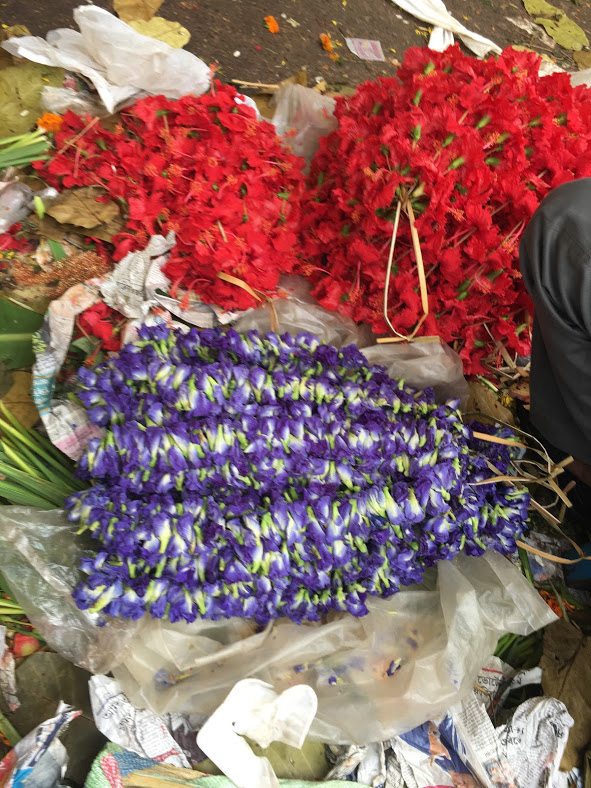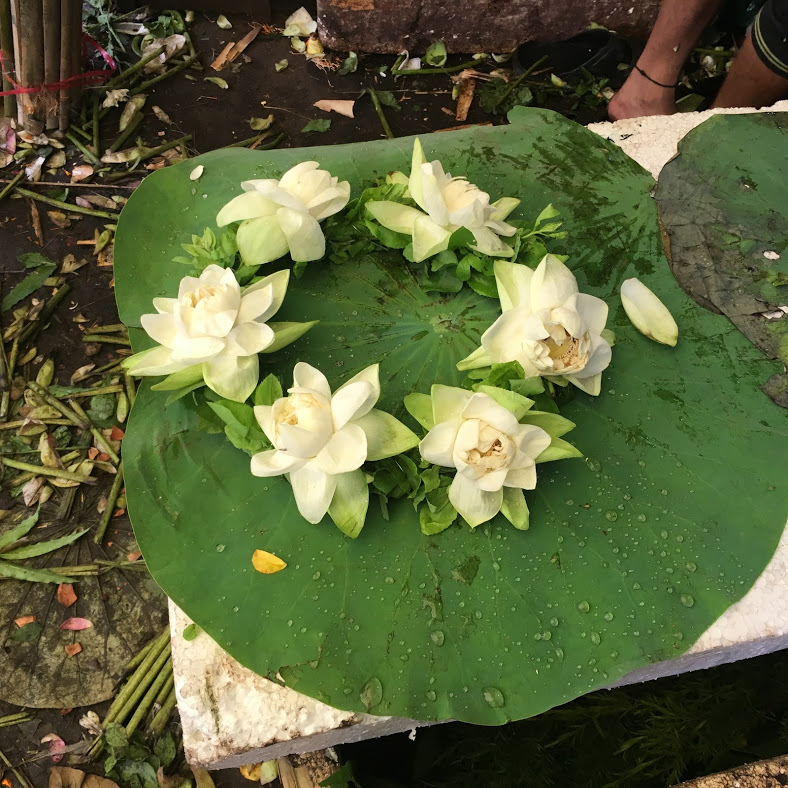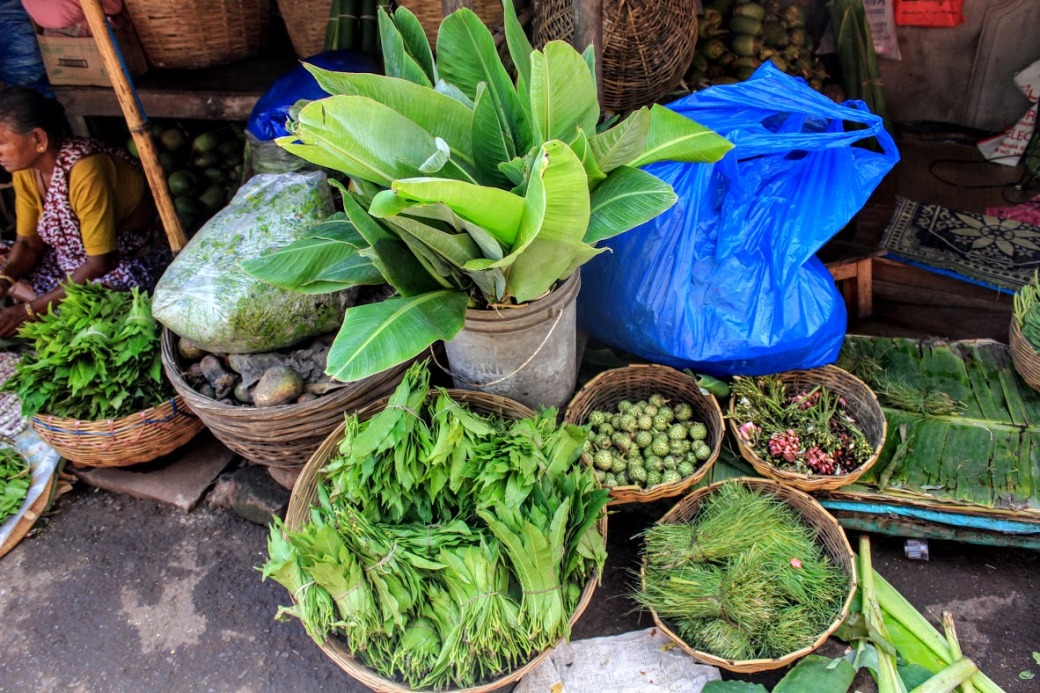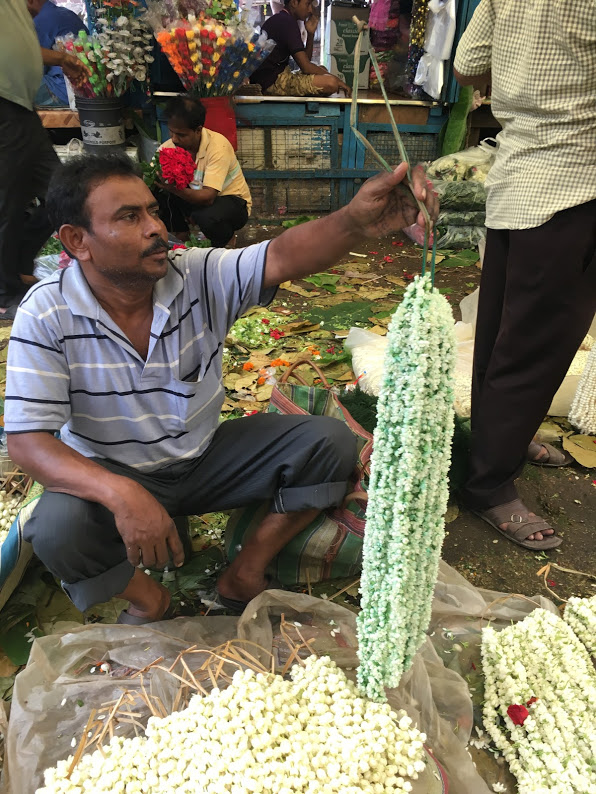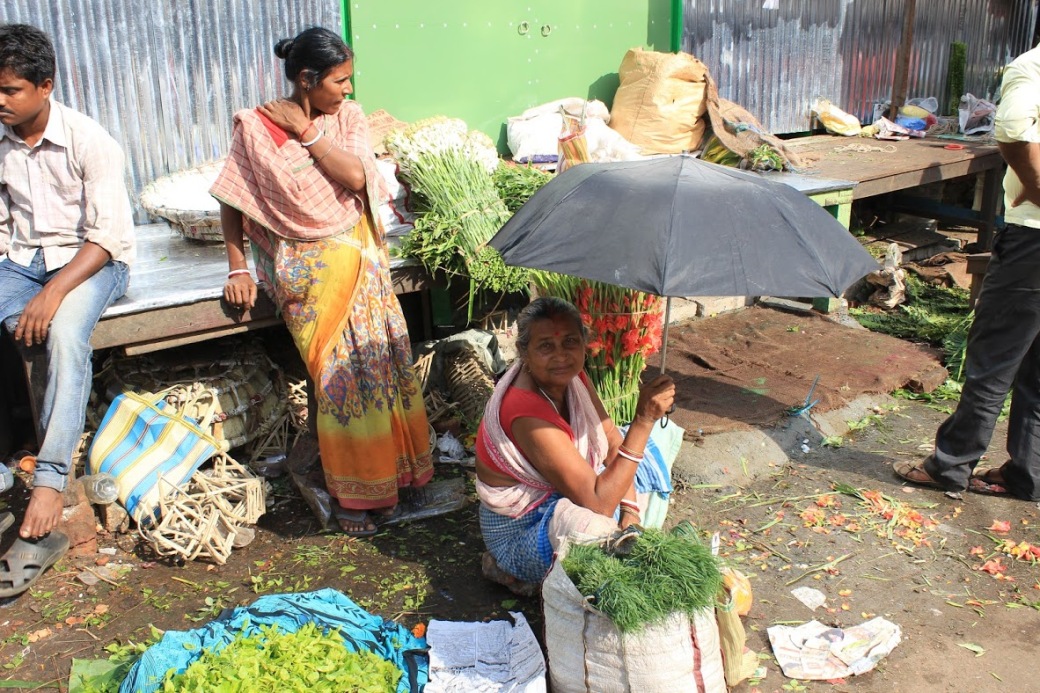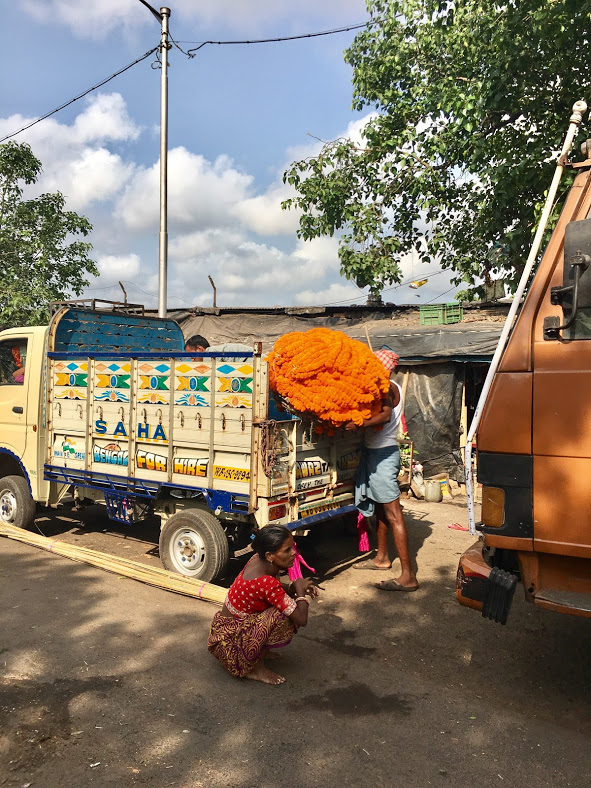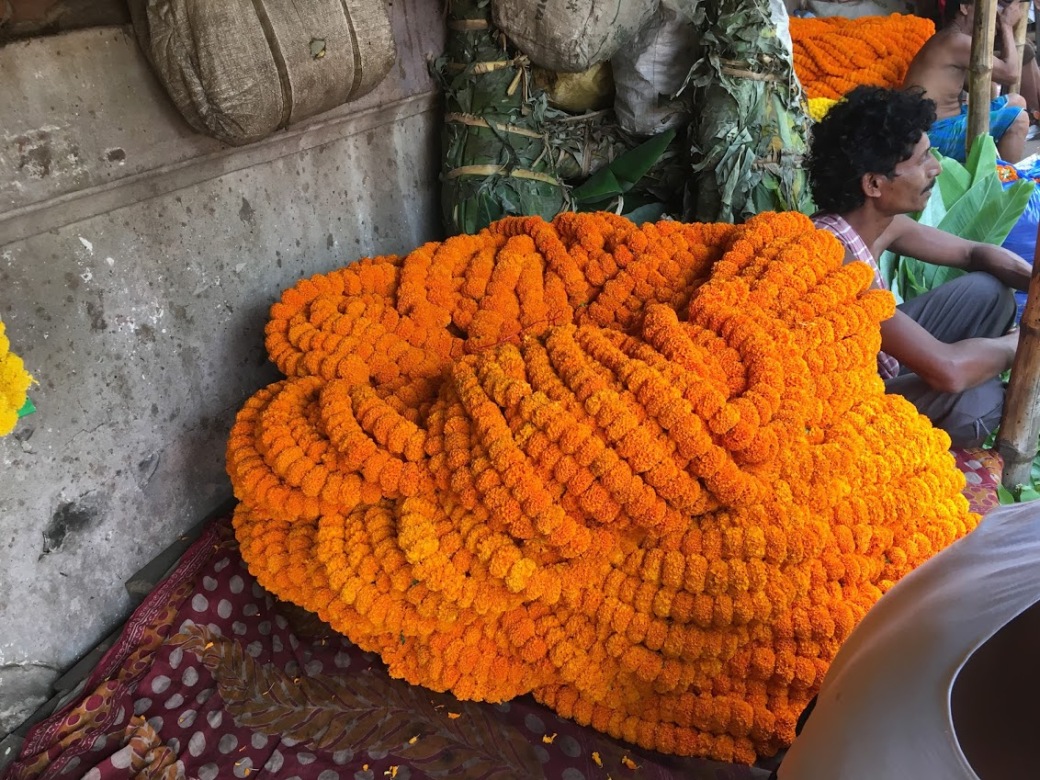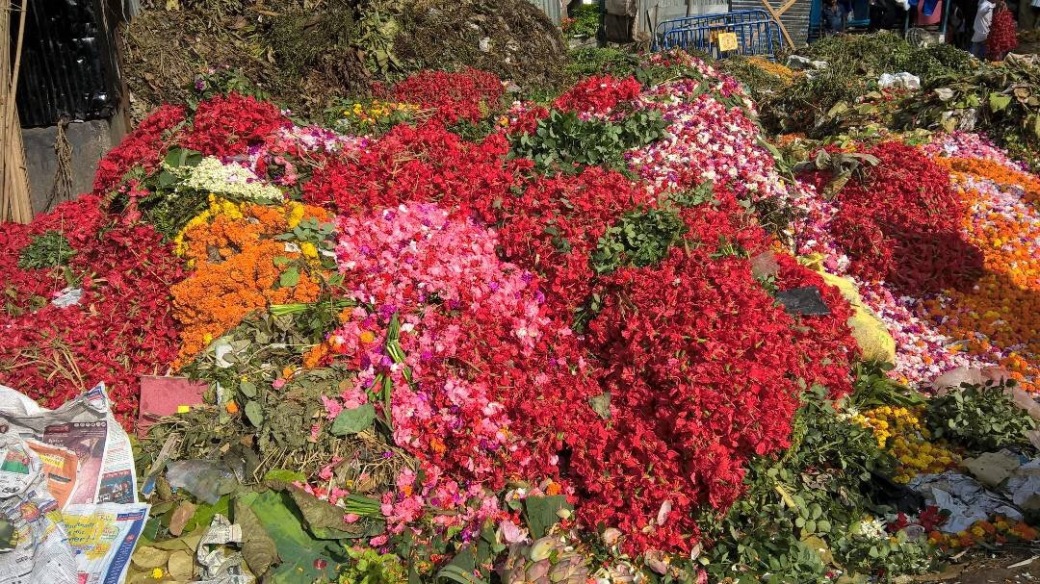Leaving the hustle and bustle of the Flower Market, we took a ferry to go to Bagbazar, North Kolkata. It was exciting to drift through the mighty Hooghly River. Ferry ride is a good way to beat the morning traffic.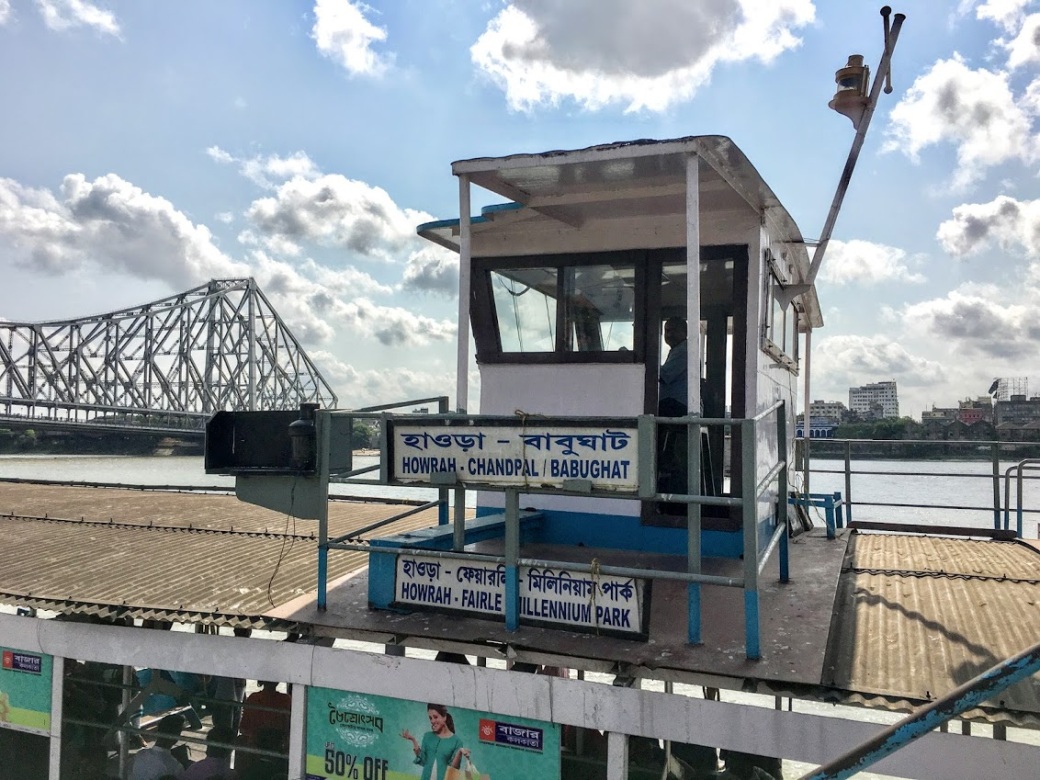
This part of the city was like the sets of a vintage Bengali movie: crumbling old mansions, trams, and hand-pulled rickshaws. One of the houses is even rumored to be haunted!

Putul Bari (House of Dolls)

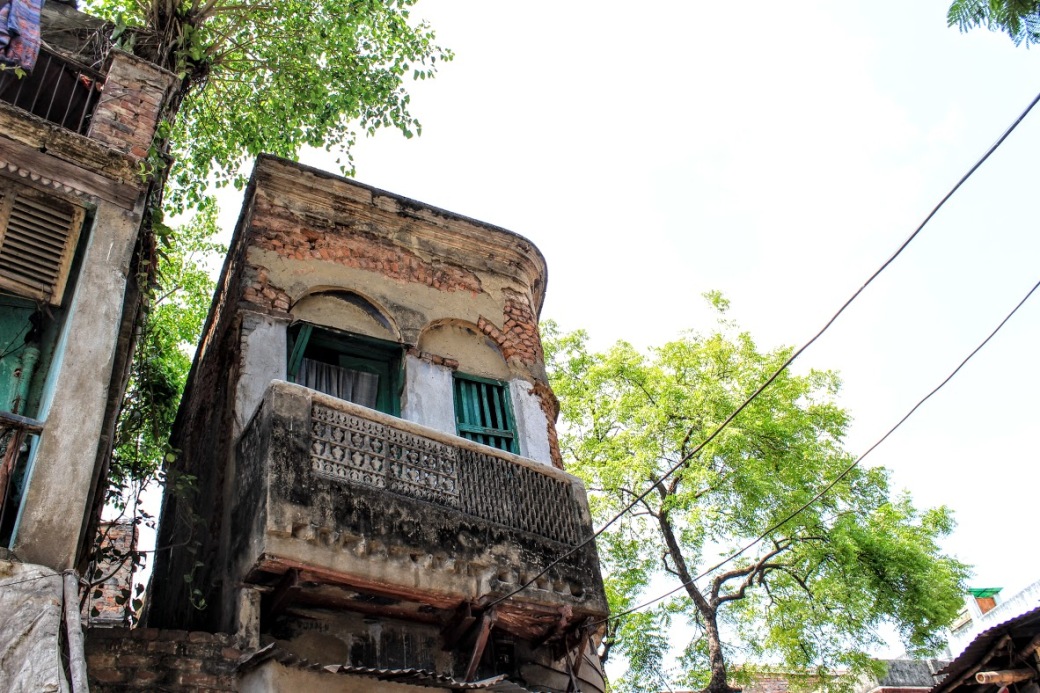
I like this cozy balcony with its intricate grill
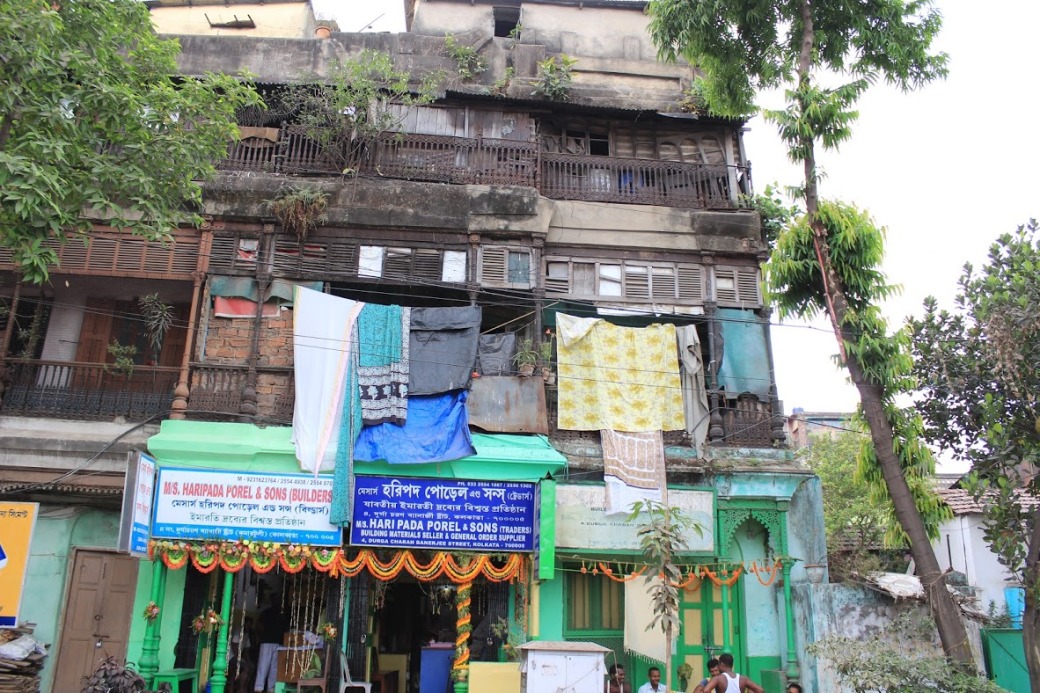
Crying for repair and restoration
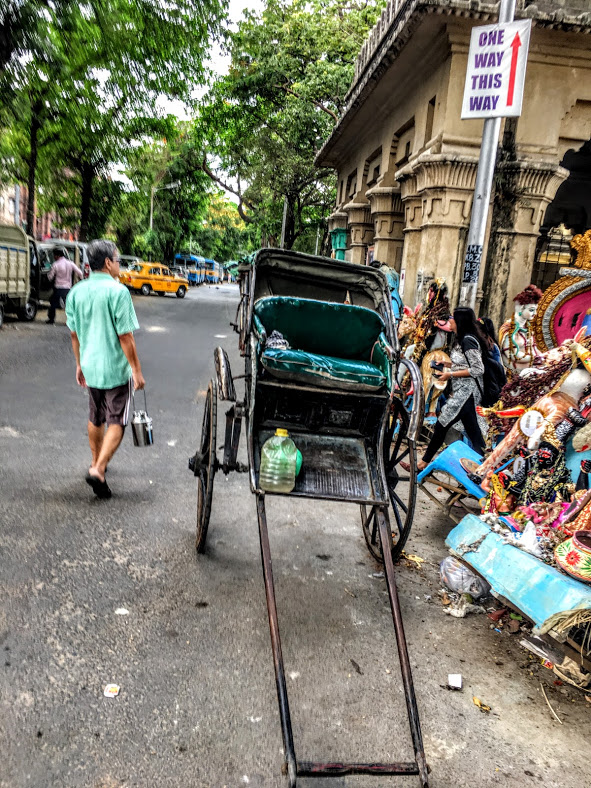
Hand-pulled rickshaw and the yellow taxi-iconic symbols of Kolkata
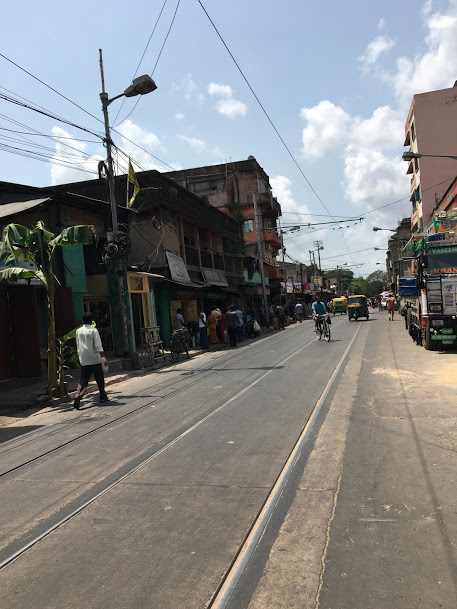
Tram tracks- Kolkata is the only Indian city with tram service and it is the oldest in Asia
Finally, we reached a warren of narrow streets lined with workshops. This is Kumartuli- the Potters’ Colony: the place of birth of Gods and Goddesses of Hindu pantheon.
Navpreet gave a brief introduction into the history and led us to explore.
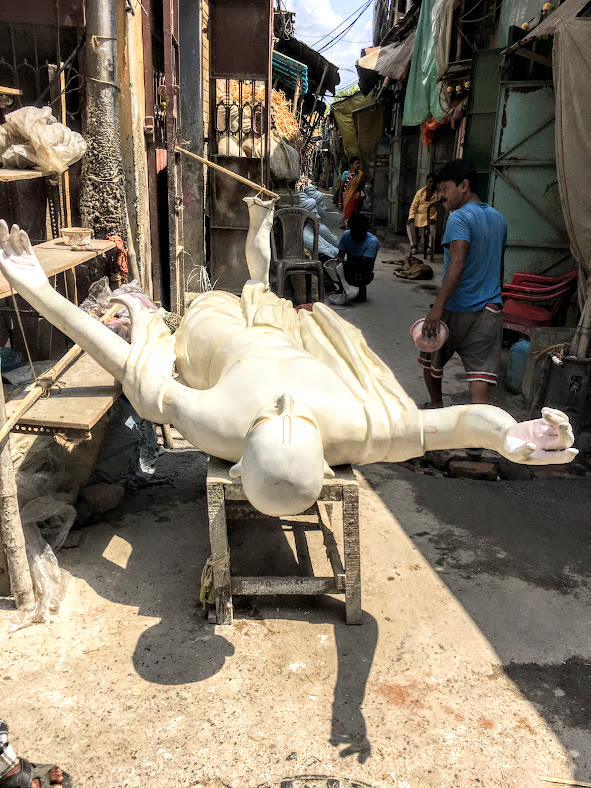
Kumartuli- where Gods are made
The tradition of idol making dates back to the 16th century when rich landlords had grand puja celebrations at their residences. The idol makers used to come from the neighboring villages. Later as pujas became a community affair there was more demand for the idols and the potters set up a permanent workshop/residence near the banks of Hooghly River. Kumartuli( In Bengali kumor is potter and tuli means locality) has since grown into a lively art community.
Bengalis celebrate many festivals all year round; Durga Puja, invoking Goddess Durga is the most popular. It celebrates the victory of the Goddess over the demon Mahishasura. During the 10- day- long festival, idols of Goddess is worshipped in thousands of marquees (pandal) all over the city. The festival is in September-October, though preparations start early.
Idol making is a long, elaborate process. Meticulous preparations start from the month of March and continue until the idols are despatched to various parts of the country and overseas.
We are here in April and today seem like any other working day for the artists. I watch the activities with awe. The artisans work silently with total concentration. The workshops are filled with statues in various stages of completion. They are carrying on an age-old craft passed from generation to generation. Everything is handmade; the raw materials used are bamboo, hay, clay, and jute.
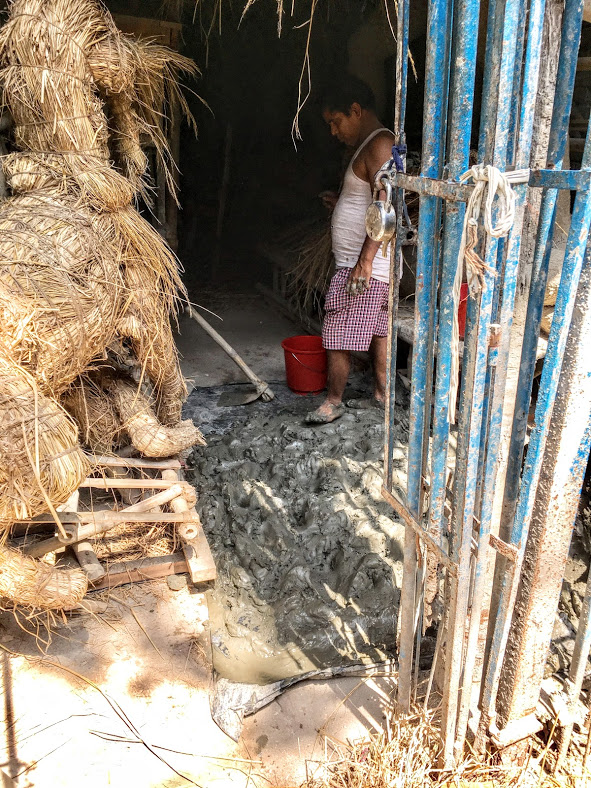
It starts by making a framework out of bamboo and hay. The skeletal frames are plastered with layers of clay and the structure is kept in the sun to dry.

The straw dummy of the Goddess Durga with ten arms. Amazing symmetry and proportion!
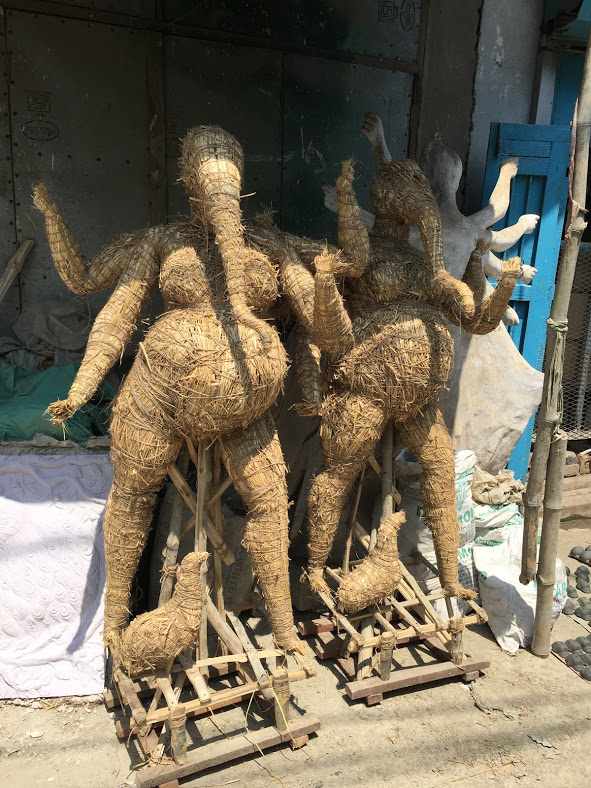
Lord Ganesha waiting for the clay coating.
The torso and limbs are sculpted first; face, fingers, and toes are moulded later.

The tiny workshop


Many faces of the Goddess
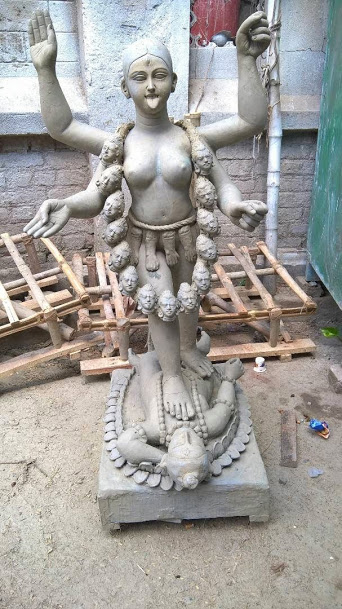
Goddess Kali

All set for the painting and varnishing
Next step is painting and varnishing. The painted models are dressed in dazzling clothes and adorned with jewelry. Thus a team of artists and ancillary workers transforms the shapeless mass of clay into a divine figure. The end product looks like this:

Goddess Durga with her children and the vanquished demon at her feet.
Navpreet regaled us with fascinating rites and rituals associated with idol making. The eyes of the Goddess is drawn on an auspicious day. Known as Chokku dan, the Goddess is supposed to descend to earth from her heavenly abode this day. I wish I can come back and see all the stages of idol making someday. It was heartening to learn that a few women are also in this predominantly male- dominated field.
From the studios, the idols are shifted to the pandals and celebrations begin. Prayers, dance, music, feasts continue until the 10th day. On the last day, the idols are taken on a grand procession and immersed in the river. Even Gods have a short lifespan!
After bidding farewell to Goddess Durga, the artists get busy with other festivals. There is a popular Bengali saying that there are 13 festivals in 12 months so the artists are making idols all year round. Their expertise is not limited to deities; philosophers, freedom fighters, political leaders, and writers are also made here.
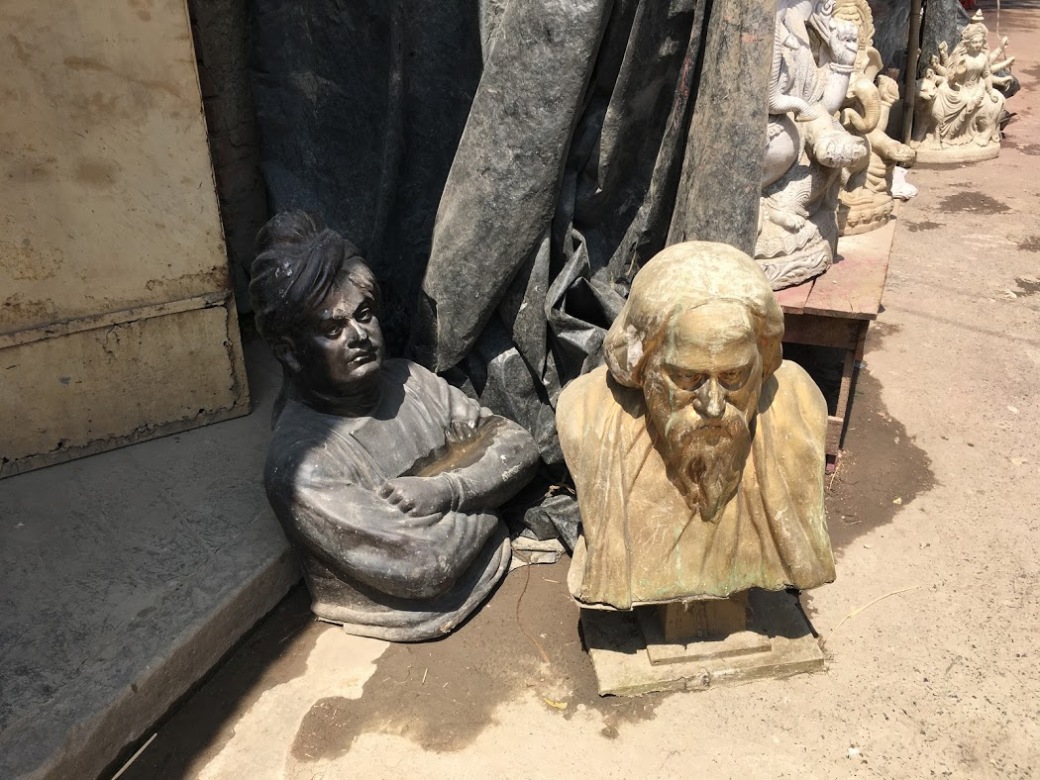
Vivekananda and Tagore
Apart from the workshops, there are many small stores with puja paraphernalia.

We chatted with this gracious artist; he is specialised in miniature idols.

The young man was totally immersed in the art using chiyari– a sculpting tool made from bamboo.

Goddess with celebrities
There is more. I see some idols dumped on the road:

Forlorn idols on the banks of Hooghly River

Languishing festal remnants. Wake up, Kolkata Municipality.
There is never a dull moment here in Kumartuli. It was a privilege to walk through this historic quarter and see the artists at work. One can’t help but notice their skills, simplicity, and the humble working conditions. I am so full of admiration and respect for the clay masters.












